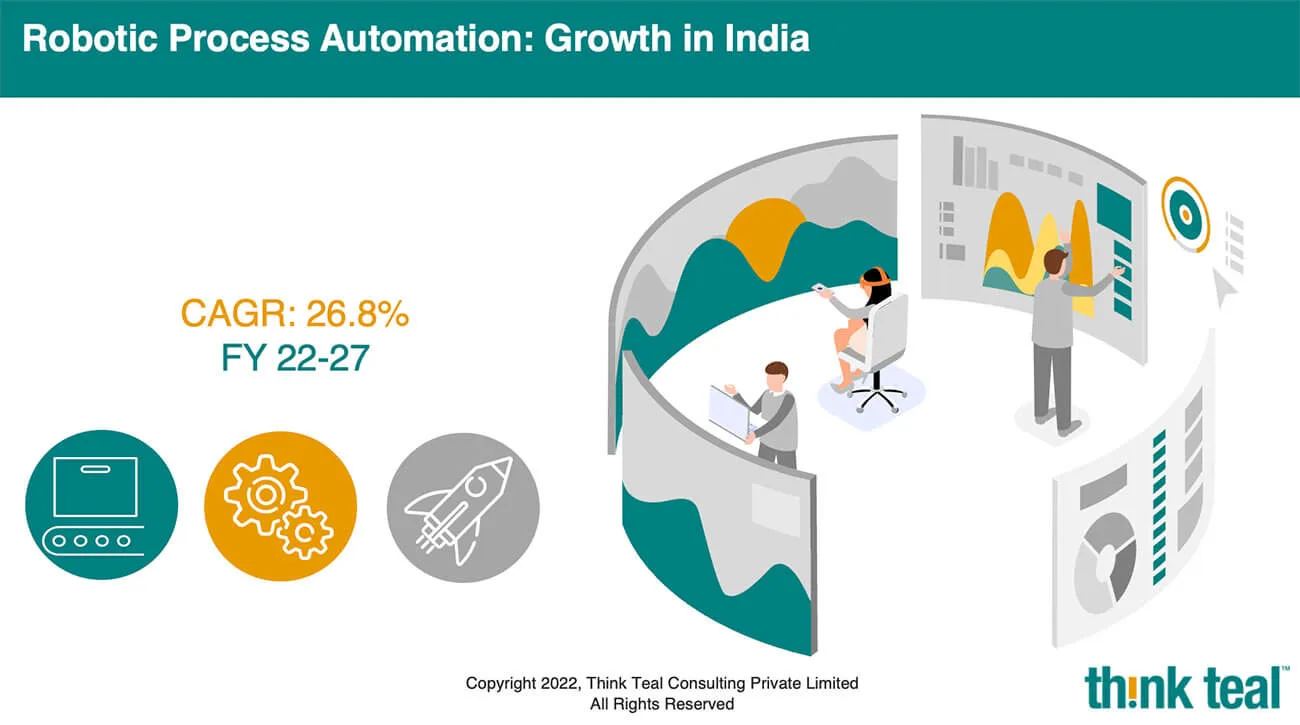Robotic Process Automation: Growth in India
RPA is still in its nascent stage as far as the Indian market goes. Considering the small base, it is not surprising to see CAGR in the mid-twenties. What will be interesting to see is how various industries adopt RPA and make compelling use cases.
Current adoption is led by BFSI, ITeS and, to some extent, healthcare. Onboarding new clients, loan and credit card processing, account reconciliation, and accounts payable and receivable are some initial areas where RPA has found its footing in the BFSI sector.
RPA can be further broken down into two segments, i.e. attended automation and unattended automation. When work is done in conjunction with people, that process is known as attended RPA, whereas if the software manages the entire end-to-end process, that process is known as unattended RPA.
Currently, the attended market has an edge with 60% of revenue generated from it, while the remaining 40% comes from unattended.
Likewise, the RPA market has one more market break-up, i.e. RPA software and RPA services. Here the services market leads the software with a significant gap (70:30).
Automation is an integral part of many digital transformation initiatives. Cost containment, compliance, error management, and expediting service delivery are some key objectives achieved through RPA. These are business vectors strongly aligned to the broad concept of process automation in an enterprise.
Another reason for the widespread adoption of RPA is that implementation doesn‘t require a change in business process, nor is there a heavy reliance on IT teams. Simple RPA projects don‘t need much IT help. In a world of self-service where everything is being rolled out as a service, it will be interesting to see how RPA as a service gets acceptance in India and how true customization, if offered to solve some real-time problems or business challenges of enterprises.


